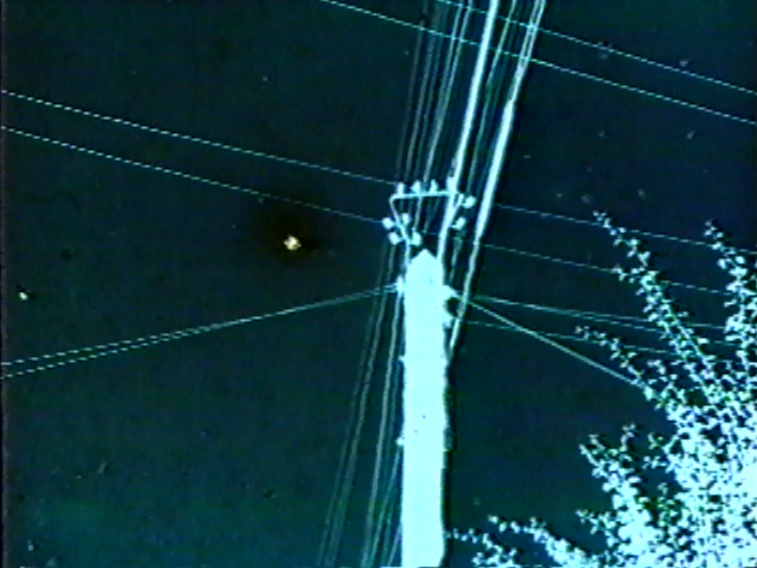
Use of negative stock in residue 2. (Digital frame grab from BC Archives video V1990:06/001.02 item #1.)
Canada
English
00:04:29
121 ft
16mm
Colour (including Kodachrome, Dufaycolor, and hand-painted stock), plus some B&W stock
Silent
"The little-known experimental film residue 2 credited to one "Angus Hanson," was probably made in 1940s Vancouver or Toronto. (No specific landmarks from either city have been identified.) "Angus Hanson" may have been a pseudonym used by film buff and cineaste Oscar C. Burritt (1908-1974), who worked in Vancouver film before moving to Toronto in 1947. He later worked for CBC Television in Toronto, where he also co-founded, and was very active in, the Toronto Film Society. residue 2 is similar (in content, style and technique) to the experimental film "and-" [ca. 1940-41], made in Vancouver by Dorothy Fowler and Margaret Roberts. Both films combine found footage with hand-painted and scratched film stock. (Note: Oscar Burritt married Dorothy Fowler in January 1942.)"--D.J. Duffy, 2025
"Experimental film. A collage film combining found footage (on mixed film stock) with hand-painted stock and hand-scratched stock leader. No readily identifiable locations are shown." (BC Archives)
"The authorship and origins of this unusual film are not clear. Since it was found in the collection of cineaste Oscar C. Burritt [following his death], it is assumed to have been made by him as a response to the [experimental] film and-, made by his future wife Dorothy Fowler [Burritt]. The Kodachrome stock in the original film has the edge code for 1938; the hidden phrase "Help the people of Denmark" may refer to the Nazi occupation of that country in 1940." (BC Archives)
Some of the found footage used in residue 2 resembles scenes from Oscar Burritt films, including "Three There" and "[Pier D fire, Vancouver]". (D.J. Duffy, 2025)
Dennis J. Duffy, "Report on the Film residue 2 by Angus Hanson," unpublished manuscript, 1990.
BC Archives film collection, Royal BC Museum [1-inch Type C analog videotape master, copied from original film]
Original film seen in Jan. 1990 by D.J. Duffy. Film was returned to Douglas S. Wilson (since deceased); current status unknown.
Noted by D.J. Duffy, 2025:
From the Film Notes of the Toronto Film Society (1948)
The programme committee has received the following letter regarding Ivan the Terrible [which was screened by the TFS on 15 November 1948]:
“While passing through Toronto I had the privilege of attending a meeting of your group in the Royal Ontario Museum Theatre. The feature was Ivan the Terrible and as opinions as to its merits were asked for, I will venture to suggest that the quality of the film is appropriately expressed in the third word of the title. It was not a motion picture at all. Rather it was an historical pageant, with the actors performing in the fashion one rightly expects in such stage presentations, all right in its place but not as an alleged motion picture. As for the technical cinematic side there is reason to believe that a series of still pictures might have caught the spirit of the story better than the nearly static photographic recordings of the motion picture camera as used in this effect. On the whole the production might be correctly referred to as the most ambitious “lantern slide” production ever attempted. In spite of these views I must admit that the sincerity and enthusiasm of the makers did shine through and make parts of the film very moving.—Angus Hanson, Galiano Island, B.C.”